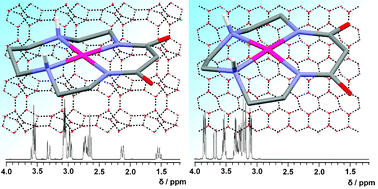Syntheses, solid state and solution structures of the palladium(ii) complexes of malonamide-derived open-chain and macrocyclic ligands†
Abstract
The crystal structures of the

* Corresponding authors
a
L.V. Pisarzhevsky Institute of Physical Chemistry, National Academy of Science of Ukraine, Prospekt Nauki 31, Kiev-28, Ukraine
E-mail:
lampeka@adamant.net
Fax: +38-044-525-25-70+
b Universität Heidelberg, Anorganisch-Chemisches Institut, Im Neuenheimer Feld 270, Germany
c School of Chemistry, University of St. Andrews, Purdie Building, St. Andrews, Fife, United Kingdom
The crystal structures of the

 Please wait while we load your content...
Something went wrong. Try again?
Please wait while we load your content...
Something went wrong. Try again?
S. P. Gavrish, Y. D. Lampeka, H. Pritzkow and P. Lightfoot, Dalton Trans., 2010, 39, 7706 DOI: 10.1039/C0DT00376J
To request permission to reproduce material from this article, please go to the Copyright Clearance Center request page.
If you are an author contributing to an RSC publication, you do not need to request permission provided correct acknowledgement is given.
If you are the author of this article, you do not need to request permission to reproduce figures and diagrams provided correct acknowledgement is given. If you want to reproduce the whole article in a third-party publication (excluding your thesis/dissertation for which permission is not required) please go to the Copyright Clearance Center request page.
Read more about how to correctly acknowledge RSC content.
 Fetching data from CrossRef.
Fetching data from CrossRef.
This may take some time to load.
Loading related content
